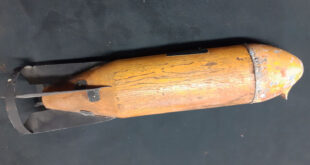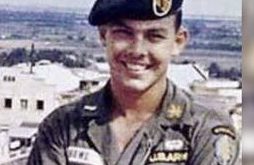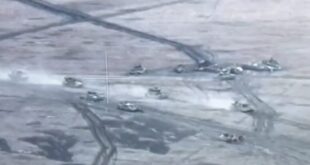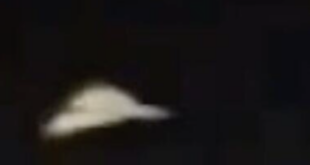America’s Submarine Force Silently Serves
By Harold Hutchison
From the December 2012 issue of SOF
PATROLLING THE DEPTHS
Perhaps the one arm of the Navy that gets the least amount of coverage in the War on Terror has been the submarine force. While these vessels compose a major portion of the total vessels in the U.S. Navy (53 attack submarines, four cruise missile submarines, and fourteen ballistic missile submarines), there’s not a lot said about what they do. Perhaps the biggest news concerning the American submarine force was discussion of a dockyard fire set by a worker that damaged USS Miami (SSN 755).

Submarines bring a number of capabilities to the table. They are, in essence, the first real “stealth” ships – their presence is hard to determine. Skilled sonar operators can locate them, but outside of that, the first sign an American submarine is in the area will be when it carries out an attack on a land or naval target.
Submarines also provide a very good means by which to deploy special operations forces – notably, Navy SEALs. In many cases, when those operations occur, the ideal is for only the SEALs and the submariners to know it went down.
THE FORCE
The backbone of the American submarine force are the 43 Los Angeles-class attack submarines. There were as many as 62 in service, but at least nineteen of these subs have been retired early since the fall of the Berlin Wall. The retired submarines were the among the 31 not equipped with a Mk 45 Vertical Launch System carrying 12 Tomahawk cruise missiles.
Whether or not they have a Mk 45 VLS, the Los Angeles-class subs, or 688s, can carry 26 weapons in their torpedo rooms and torpedo tubes. The weapons carried can include the Mk 48 ADCAP torpedo, the Harpoon anti-ship missile, and the Tomahawk cruise missile. When one adds the 12 Tomahawks in the Mk 45 on the last 31 688s, these are still very capable subs, despite the fact that the first of these subs entered service in 1976!
The submarine that will take the reins from the 688s is the Virginia-class submarine. While it carries the same weapons as a 688, the Virginia-class subs also feature new technology, including new periscopes, the use of fiber-optic cables instead of hydraulics to control the diving planes, and improved sonars.
THE FORGOTTEN SEAWOLF
Three of the submarines are Seawolf-class submarines. This was a very highly-capable vessel that was cut at three vessels in favor of the cheaper Virginia-class vessels. However, the Seawolf-class subs cost $2.8 billion, and Virginia-class subs cost about $2.4 billion each. Perhaps the extra $400 million per sub would have been a good investment, especially if it could have bene upgraded with some of the tech used on the Virginia-class subs.

USS Seawolf was capable of diving to 2000 feet, and carried eight torpedo tubes. The Seawolf can carry up to 50 weapons in its torpedo room, much more than a 688 or a Virginia. The sub’s sensors were also improved, and it was the first to use a pump-jet propulsion system that is much quieter than the 688’s propeller. It is the fastest submarine in the United States fleet. It also is capable of under-ice operations, and clearly outclasses any other submarine in the world.
The third Seawolf-class submarine, USS Jimmy Carter (SSN-23), was built as a special-operations submarine, replacing USS Parche (SSN 683). USS Parche was used for many dangerous missions, including Operation Ivy Bells, in which Soviet undersea cables were tapped, providing an intelligence bonanza until a spy compromised the tap. Parche was highly decorated, receiving nine Presidential Unit Citations and ten Navy Unit Citations for her service.
DECLINING NUMBERS
As late as 1998, the United States had 68 nuclear attack subs in service, plus 18 Ohio-class ballistic missile subs. Near the end of the Cold War, the force was over 80 submarines. The decline in the last 20 years has created gaps in coverage. At one point, European Command’s request for submarine assets was being declined in order to maintain the sustainability of the submarine force!
 Navy plans call for a force of 37-41 attack submarines by 2035, a further reduction from the present level of 53 submarines. Meanwhile, according to a report by Globalsecurity.org, the optimum force structure for our submarine force was in the range of 68 to 76 attack submarines, according to the Joint Chiefs of Staff’s Submarine Force Study 1999 study. This was before the ChiComs grew very aggressive in the South China Sea. While dual-crew arrangements could increase the operations tempo, it would also add to the wear and tear on the subs.
Navy plans call for a force of 37-41 attack submarines by 2035, a further reduction from the present level of 53 submarines. Meanwhile, according to a report by Globalsecurity.org, the optimum force structure for our submarine force was in the range of 68 to 76 attack submarines, according to the Joint Chiefs of Staff’s Submarine Force Study 1999 study. This was before the ChiComs grew very aggressive in the South China Sea. While dual-crew arrangements could increase the operations tempo, it would also add to the wear and tear on the subs.
The fact remains that the submarines are very crucial assets, and the United States is at grave risk of being caught short. It takes a five and a half years to build a Virginia-class submarine, and it is very doubtful that we will get that much warning that we will need more submarines. Ultimately, the Silent Service has often served quietly, helping secure the seas. These vessels are being stretched thin – paying the price of the 1990s “peace dividend” that may prove to be far more costly to the United States down the road.
 Soldier of Fortune Magazine The Journal of Professional Adventurers
Soldier of Fortune Magazine The Journal of Professional Adventurers





